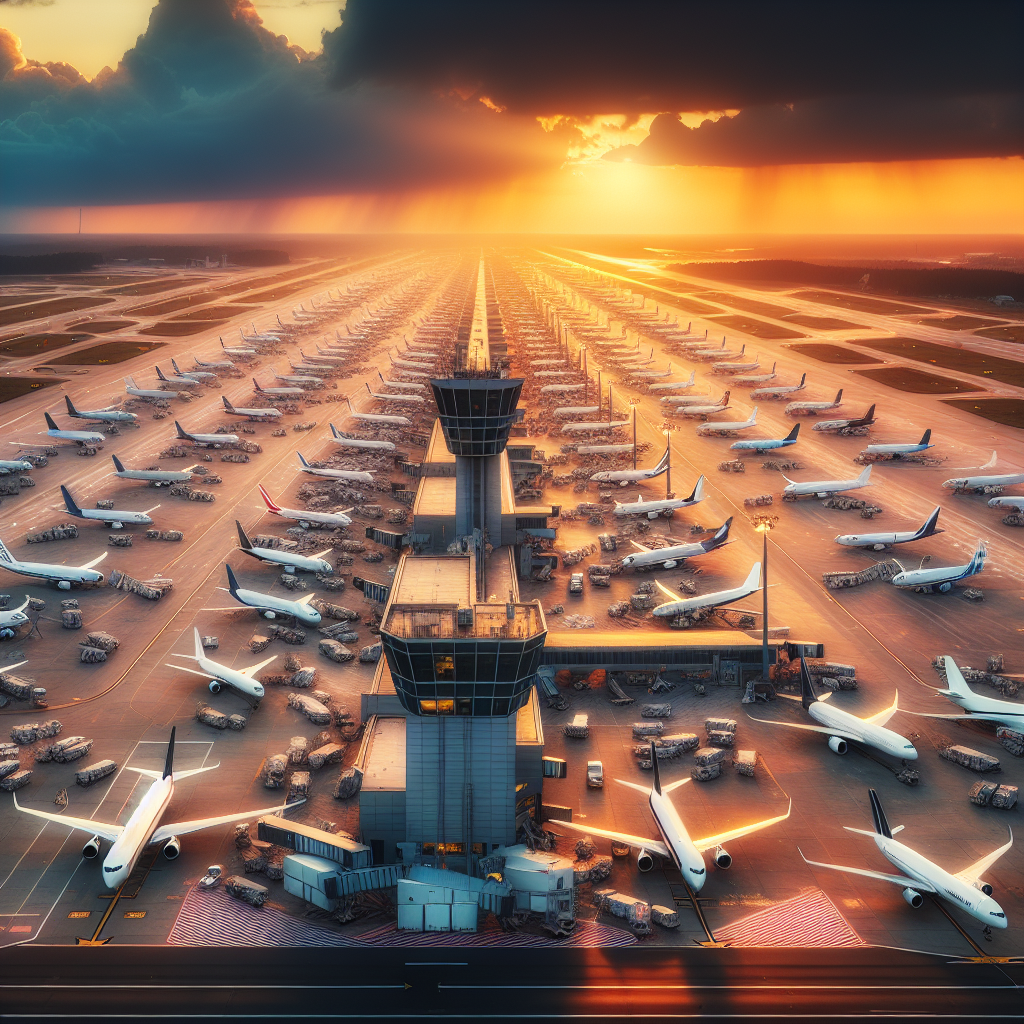Due to a worsening shortage of air traffic controllers, thousands of flights were delayed on Saturday. As the government shutdown entered a record-breaking 40 days on Sunday, major airlines were preparing to face the third day of government-mandated flight reductions.
The Federal Aviation Administration (FAA) instructed airlines to reduce flights by 4% daily at 40 major airports starting from Friday, citing safety concerns in air traffic control. It is expected that flight reductions will reach 6% by Tuesday and 10% by November 14th.
Airline officials privately expressed concerns that the significant delays were making it nearly impossible to make flight arrangements and plans, and worried about how the system would operate if the personnel shortage worsened.
On Sunday, U.S. Transportation Secretary Sean Duffy warned that if the government shutdown continues, air travel before the Thanksgiving holiday “will only get worse.” He mentioned that if more air traffic controllers were absent, he might request a 20% reduction in air traffic.
Republican Senator Ted Cruz stated that he was informed by the FAA that since the government shutdown, over 500 safety reports had been submitted by pilots reflecting errors due to fatigue among air traffic controllers.
During the government shutdown, 13,000 air traffic controllers and 50,000 security screeners were forced to work without pay.
According to the union, federal employees will miss their second full paycheck on Monday. Officials noted that some air traffic controllers had to take on part-time jobs to make ends meet.
The flight reductions began on Friday morning, involving the four largest airlines – American Airlines (AA), Delta Airlines, Southwest Airlines, and United Airlines – totaling around 700 flights.
On Friday, 1025 flights were canceled and 7000 were delayed. On Saturday, around 1550 flights were canceled and 6700 were delayed. It is expected that these airlines will cancel a roughly similar number of flights on Sunday as well.
According to CNBC, the flight cancellations on Friday ranked 72nd since January 1, 2024. As of Saturday night, nearly 2200 flights were canceled in the U.S., accounting for around 7% of the day’s planned flights. About a third of the flights were canceled earlier in the day, comparable to cancellations due to severe thunderstorms.
Daniel McKenzie, an airline analyst at Harbor Research Partners, stated in a report on Friday that considering the usual surge in ticket prices during Thanksgiving, the impact of the flight disruptions on airlines could quadruple.
This week, airlines waived change fees for affected passengers, who could also request refunds. Airline executives mentioned that many passengers were rebooked on other flights, while some had to urgently seek alternative arrangements due to flight changes.
Hertz rental car company reported a 20% increase in one-way rentals following the FAA’s announcement of flight reductions.
The FAA announced on Saturday that the shortage of air traffic controllers affected 42 airport towers and other control centers, leading to flight delays in at least 12 major U.S. cities, including Atlanta, Newark, San Francisco, Chicago, and New York.
The following are the airports affected by the FAA and Department of Transportation (DOT) reduced policy:
(airport code – airport name)
– ANC – Anchorage International Airport
– ATL – Hartsfield-Jackson Atlanta International Airport
– BOS – Boston Logan International Airport
– BWI – Baltimore/Washington International Thurgood Marshall Airport
– CLT – Charlotte Douglas International Airport
– CVG – Cincinnati/Northern Kentucky International Airport
– DAL – Dallas Love Field Airport
– DCA – Ronald Reagan Washington National Airport
– DEN – Denver International Airport
– DFW – Dallas/Fort Worth International Airport
– DTW – Detroit Metropolitan Wayne County Airport
– EWR – Newark Liberty International Airport
– FLL – Fort Lauderdale-Hollywood International Airport
– HNL – Daniel K. Inouye International Airport (Honolulu)
– HOU – William P. Hobby Airport (Houston)
– IAD – Washington Dulles International Airport
– IAH – George Bush Intercontinental Airport (Houston)
– IND – Indianapolis International Airport
– JFK – John F. Kennedy International Airport (New York)
– LAS – McCarran International Airport (Las Vegas)
– LAX – Los Angeles International Airport
– LGA – LaGuardia Airport (New York)
– MCO – Orlando International Airport
– MDW – Chicago Midway International Airport
– MEM – Memphis International Airport
– MIA – Miami International Airport
– MSP – Minneapolis-Saint Paul International Airport
– OAK – Oakland International Airport
– ONT – Ontario International Airport
– ORD – Chicago O’Hare International Airport
– PDX – Portland International Airport
– PHL – Philadelphia International Airport
– PHX – Phoenix Sky Harbor International Airport
– SAN – San Diego International Airport
– SDF – Louisville International Airport
– SEA – Seattle-Tacoma International Airport
– SFO – San Francisco International Airport
– SLC – Salt Lake City International Airport
– TEB – Teterboro Airport
– TPA – Tampa International Airport
(This article referenced reports from Reuters and CNBC)

